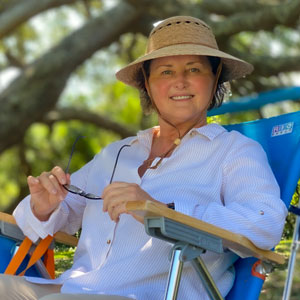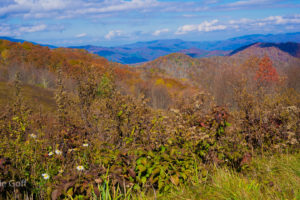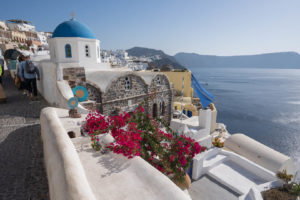Beautiful Peru! On The Road to Machu Picchu
“Few romances can ever surpass that of the granite citadel on top of the beetling precipices of Machu Picchu, the crown of Inca Land.” – Hiram Bingham, American explorer who brought Machu Picchu to the world’s attention.
Our group of six embarked on an incredible photography adventure on the road to Machu Picchu with Jim Cline Photography. We began our journey in Lima, flew to Cusco, and then traveled to Pisac. From there, we followed the Urubamba River eastward until we reached the town of Ollantaytambo. This popular jump-off point allowed us to board the PeruRail Vistadome Train to Aguas Calientes (Machu Picchu Town). Throughout the trip, we captured stunning landscapes and interacted with friendly locals. As for Machu Picchu, its beauty and majesty are as mesmerizing as Hiram Bingham described them in 1911.
Starting in Lima, we wandered from the Miraflores District to the boardwalk, with its sweeping views of the Pacific Ocean. The local vendors playfully posed with their bouquets for a few coins. Along the way, I got to know a couple of my travel companions—Jim from Southern California and Seamus from Ireland. The next morning, we met Jim Cline, an expert in photography and the mastermind behind the trips that bear his name, Jim Cline Photography.
From Lima, we flew to the ancient Incan capital of Cusco. Its location high in the Peruvian Andes at 11,152 feet had me preparing my remedy for altitude sickness. I used a concoction of pills and liquid chlorophyll, which tastes like drinking a cup of grass, but it helped.
Cusco is a blend of Incan and Spanish cultures, and a thriving destination for visitors.
The golden statue of Emperor Pachacuti welcomes thousands of visitors each year in the Plaza de Armas. Locals pose in traditional Andean clothing to supplement their income. This is perfect for photographers who know how to approach them. I even tried holding one of the little lambs, which was a little more awkward than my camera. After a fun day, we enjoyed a delicious dinner, accompanied by music and traditional Peruvian dancing, ‘Diablada Puneña.’ On the road to Machu Picchu, in Cusco, I met fellow photographers Andy and Elizabeth, from England.
Our excitement grew as we traveled through breathtaking vistas in the Sacred Valley. Along the way, we stopped to feed llamas and alpacas and to capture moments with skilled wool weavers. It’s funny to remember our love for alpaca sweaters back in high school in the 1970s. I discovered that those sweaters, crimpy and loose, come from Huacaya alpacas. In contrast, Suri alpacas produce long, silky fibers for scarves, and vicuña, the national animal, provides the finest and most expensive wool in the world. Interestingly, llamas are also related to one of my favorite creatures, the camel—I see it in their whimsical faces. However, be aware that both animals can spit over long distances when they are agitated.
We also visited the Church of San Blas, Cusco’s oldest church, located in the artisans’ quarter. The narrow cobblestone streets complement the beautiful dry-stone masonry walls, built by the Incas in the 15th century.
Pisac is an enchanting town celebrated for its awe-inspiring Inca ruins, vibrant market, and breathtaking natural beauty.
Picture-perfect agricultural terraces crafted by the Incas centuries ago captivated our imagination. “Sacred” for its life-giving fertility, the Incas cultivated hundreds of vegetable varieties across the valley’s numerous microclimates. But it’s fascinating that the humble potato takes the spotlight! Today, over 4,000 potato varieties thrive in this magical environment.
In the villages, much of the protein comes from cuy (guinea pig). We tried it, even though we found them so cute when we visited a local family raising community guinea pigs. This unique Peruvian delicacy pleasantly surprised us with its chicken-like flavor!
We capped off our adventure with a rewarding hike through the breathtaking landscape.
At Ollantaytambo, we climbed to the top of the temple ruins to view the town’s ancient layout. The unfinished Sun Temple, now an important archeological site, has massive 50-ton stones cut in an interlocking pattern. We stayed in the village for two nights before getting back on the road to Machu Picchu. However, we were there long enough for a tuk-tuk ride to town for lunch, and to visit a family in the agricultural village of Huilloq, high in the Andean hills.
As we walked through the village, a group offered us chicha, the corn beer they were drinking. But we moved along, knowing that our host family would serve refreshments, including, of course, the delicacy, roasted guinea pig. After food, photography, and dancing, it was time for serious business; we were celebrating a special event. With a tray of haircutting tools, our guide, Jim, cut the youngest grandchild’s hair for the first time. This tradition means that Jim is now the boy’s Godfather. The warmth of the family, including the children, was truly endearing.
The legacy of the Incas endures in terraced agricultural landscapes, the rich Quechua language, vibrant weaving, advanced masonry techniques, and the close-knit social fabric of their communities.
Finally, we’re on the road to Machu Picchu! This time, we were actually on the train to Machu Picchu. The ride is far from dull. The conductor invited us to join the El Diablillo,” part of traditional Andean cultural folklore, in the entertainment car. He is mischievous, embodying a devilish persona. His playful antics symbolize the dual nature of life—good and evil, joy and mischief. With his prominent nose and humorous features, he and his bubbly partner, Molly, a character from the animated series ‘Bubble Guppies, ‘ entertain and evoke laughter as they encourage passengers to dance. It was hilarious trying to keep up with his playful moves while avoiding his enormous nose!
By the time the train arrived in Aguas Calientes, we could truly feel the power of Machu Picchu. We even caught a glimpse of a section of the Inca Trail during one of the train stops. After checking into our rooms, we wasted no time grabbing the bus for the exhilarating ride to the drop-off point. From there, Machu Picchu was just a short hike. After all the beauty we had seen on the way to Machu Picchu, would the ‘Old Mountain’ turn out to be an anticlimax, I wondered.
I needn’t have worried; when I finally saw Machu Picchu, I was overwhelmed by its beauty, its symmetry with the surrounding landscape, and the ingenuity of its construction.
Here we were, surrounded by the incredible know-how and magic of the Incan Empire, which had thrived for thousands of years. My imagination added to the air of mystery surrounding this ancient site. I could envision the Incas feasting, hunting, observing the stars, and conducting ceremonies. It was everything I had imagined and more!
We visited the site several times, under both cloudy and sunny skies, before reluctantly departing the area with a sense of wonder and gratitude.
Travel Notes:
Check out Jim Cline Photo Tours for an incredible photography experience! You don’t need to worry about your camera skills; I learned a lot during this trip. For example, using filters in the evening light, practicing with varying camera modes, and using the flash at indoor events. You can even use your cell phone!
Traveling with a photography guide offers key benefits. You’ll get to the best locations at the ideal times, like golden hour. You’ll also have flexibility time, for composing shots and stopping when an opportunity comes up, like seeing a sheep herder along the road. These are all great, even if you’re not a photographer! On our trip, we had both planned and spontaneous photo opportunities. We were on the lookout for them on the road to Machu Picchu and at stopovers along the way.
Traveling itself provides an opportunity to meet like-minded people, too. Before Peru, I didn’t know any of the people on the trip, but we got to know each other quickly, and I learned from them, too.
Peru has many UNESCO World Heritage Sites, and we visited several on this trip. These included: the Historic Center of Lima; the city of Cusco; and the Andean Road System. The Historic Sanctuary of Machu Picchu is also a UNESCO World Heritage Site. It’s also one of the Seven Wonders of the World! And the Ollantaytambo Archaeological Site is a Historical Landmark.
Look for these books for the best reading about Latin America and Machu Picchu:
The Open Veins of Latin America, by Eduardo Galeano, Copyright 1971, 1973, 1997
Inca Apocalypse: The Spanish Conquest and the Transformation of the Andean World, by R. Alan Covey, Copyright 2020
Turn Right at Machu Picchu: Rediscovering the Lost City One Step at a Time, by Mark Adams, 2011, 2012
For more of Marie’s travels with photographers, go to Travel Notes and Storytelling at these links:
14.5 hours in paradise – Love of Photography in Central Florida
Lowcountry Photography and Fascinating Civil War History in Beaufort, S.C.
Learning Photography with the Professionals – Expedition to Jordan
Love of the Wild in Tanzania
Now is the Best Time to See The Treasures of Ancient Egypt – a Photo Journal
Why People Love Bali! Photo Essay of People, Landscapes, and Traditions

















































